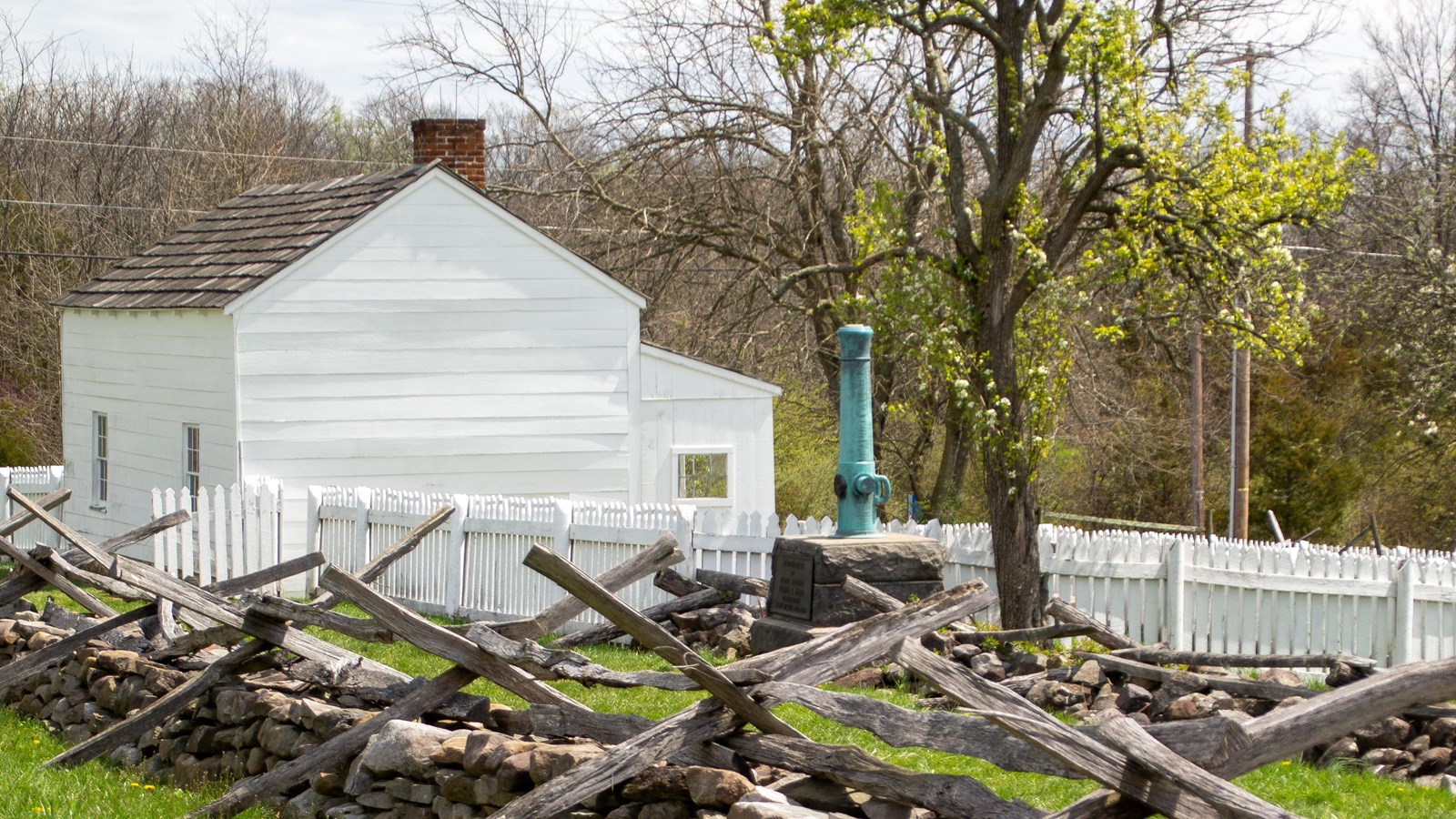Last updated: April 10, 2024
Place
Lydia Leister Farm: Meade's Headquarters

NPS Photo
This was the home of the 52-year-old widow Lydia Leister and her four children in 1863. They left the house on July 1 after being warned it was likely there would be fighting in the area. General George G. Meade, commanding the 90,000-man Unites States Army of the Potomac, established his headquarters here early on July 2. The location was central to all parts of his army’s front lines, and therefor made an ideal location for a headquarters. As an army headquarters, this was a busy place during the battle. There were numerous couriers and staff officers coming and going, cavalry and infantry headquarters guards, and a provost guard, which served as military police.
Late in the night on July 2, General Meade met with twelve of his senior generals in the main room of the house to discuss the day’s fighting and the plans for July 3. All agreed to “stay and fight it out” in the position the army then occupied. From the porch, this room is to the right. The furnishings currently in the room are reproductions of what was there at the time. Some of the original furniture of this room is on display in the Museum.
On July 3, the Confederates shelled Cemetery Ridge for nearly two hours before Pickett’s Charge. Many shells overshot the ridge and a number struck the Leister house and farmyard. As a result General Meade evacuated to a new headquarters. Captain George Meade Jr., the general’s son, described the scene here at the house:
"One shell burst in the yard among the staff horses tied to the fence, another tore up the steps of the house, another carried away the supports of the porch, one passed through the door, another through the garret, and a solid shot barely grazing the commanding general, as he stood in the open doorway, buried itself in the box by the door at his side."
The Federal army used the house and barn as an aid station and assembly point for evacuating wounded to field hospitals after Pickett’s Charge. Both buildings and the rest of the small farm suffered considerable damage because of the battle. However, Mrs. Leister had the buildings repaired and managed to recover her losses. She continued to live here until 1888 when she moved into Gettysburg due to poor health.
